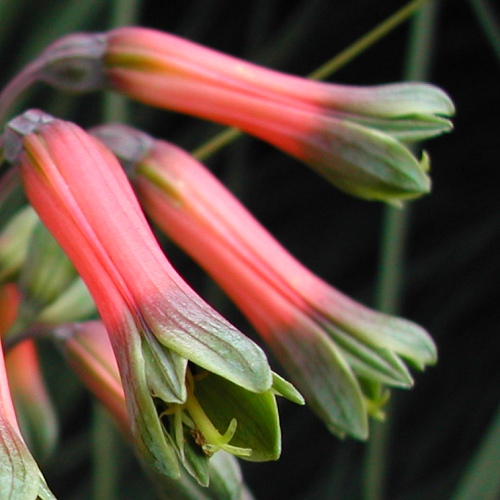Planting the tubers
Be careful when handing the tubers, to avoid breaking them off Getting started -- I recommend starting your plant in a 1-2 gallon pot (4-8 liters). If you received a plant, and not dormant tubers, give it filtered sun for the first week, and then increase the sun by an hour or two every few days. Avoid strong afternoon sun the first month. For soil, use a well draining mix.
Personally i use a mix of 1 part
coir fiber Bury your plant an inch deeper in the soil than it was grown. If you received bare tubers, plant them about 2-3 inches (5-8 cm) deep. Don't compress the soil after planting. Watering -- It prefers soil that's consistently moist but not soggy. Don't allow the soil to dry out or it may go dormant. Planting out -- Once your plant has grown in a 1 gallon container for a month or two, it can be planted in the ground in Zones 7-8 and above. Climate - It comes from a climate with mild temperatures and cool nights, but it has reportedly handled temperatures in the 90s (35 degrees C) in cultivation. Still, consider it experimental in consistently hot conditions, especially if nights are warm. The underground rhizomes probably can survive down to 25 degrees F (-4 degrees C) or less if planted deep. In Zones 7 and below, it should be grown in a pot and brought indoors over the winter. In other zones that are prone to frost, mulch the plant well, and plant it so the tubers are 4-6 inches (10-15 cm) under ground. Fertilizing
-- It has average fertilizer needs. During periods of active growth, feed
about every 2 months with a granular fertilizer Dormancy - It can go dormant or partly dormant in winter if temperatures are cool enough. When this happens, reduce watering, giving just enough to keep it slightly moist throughout. Bugs to watch for -- Aphids (green ones are hard to see), caterpillars, slugs & snails. If you have any questions or problems, please email me. Enjoy your plant! - Jeff Strange Wonderful Things
|
|||||||||


